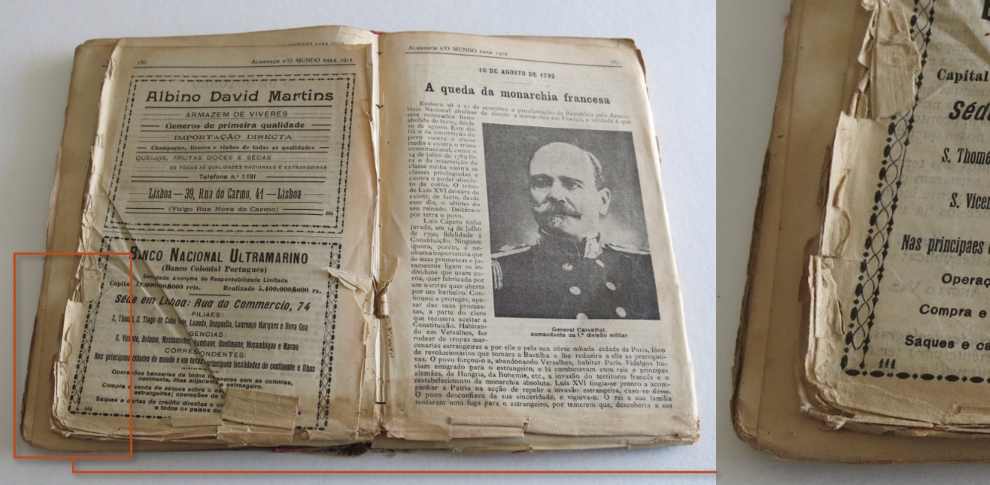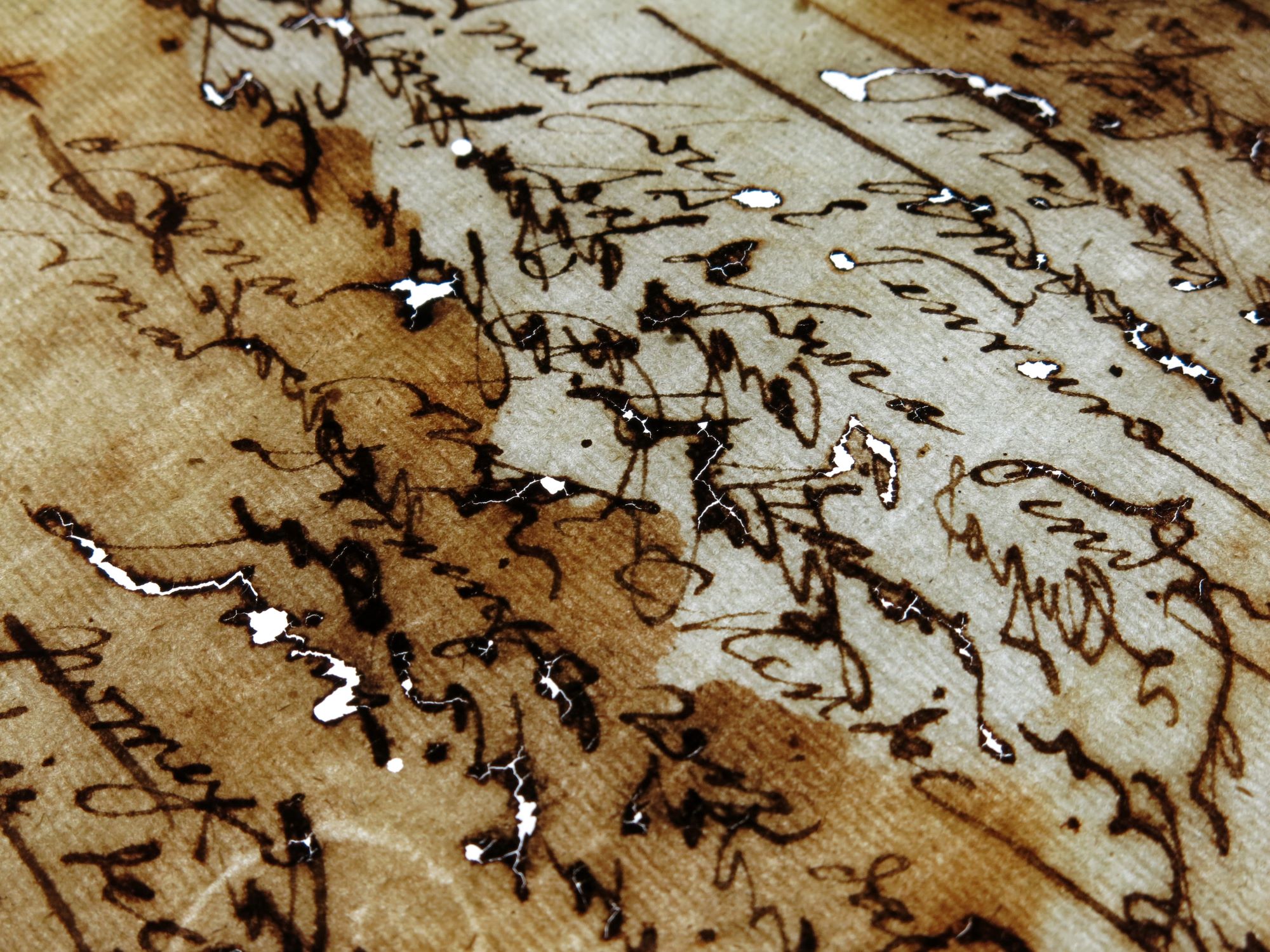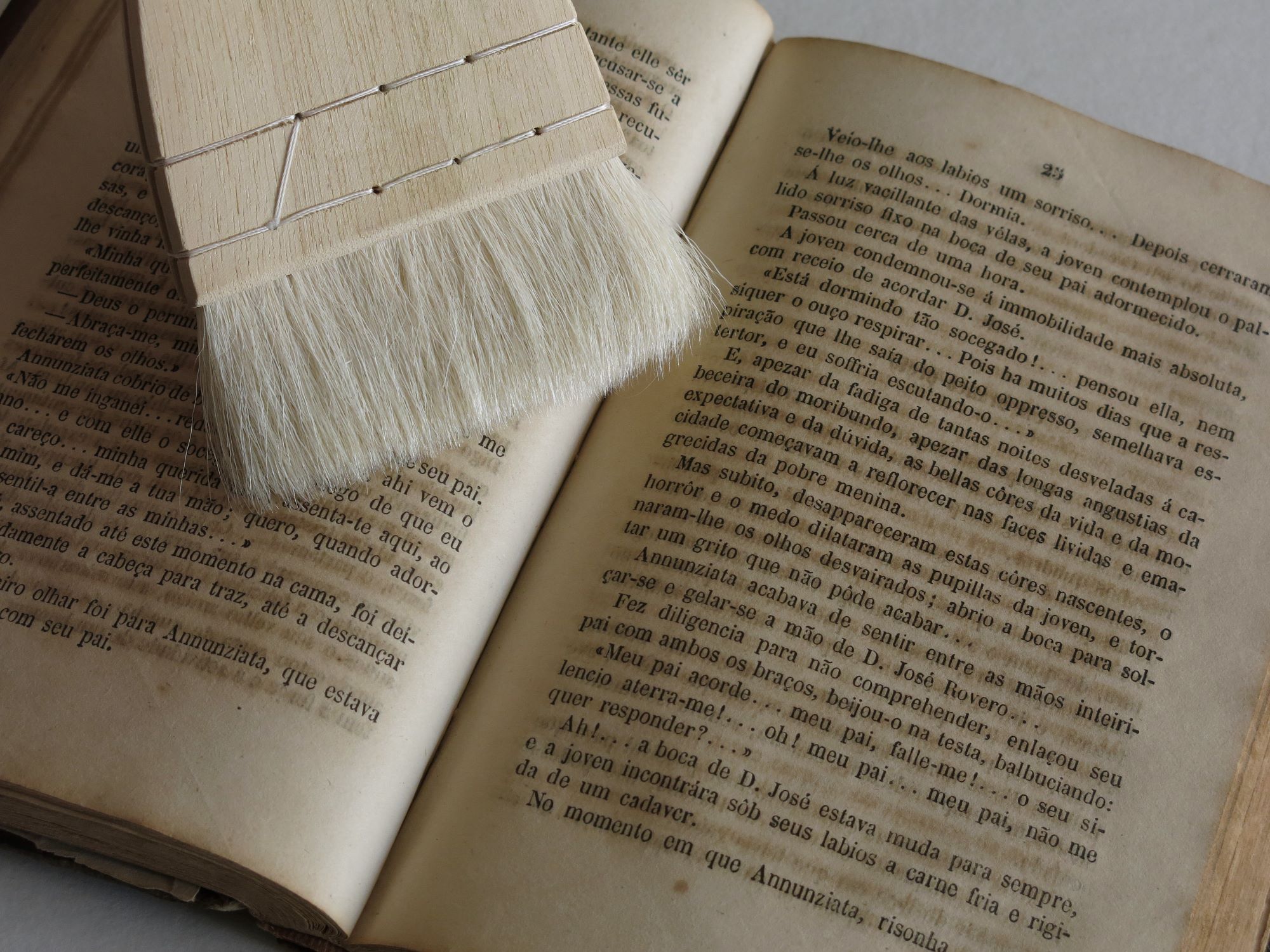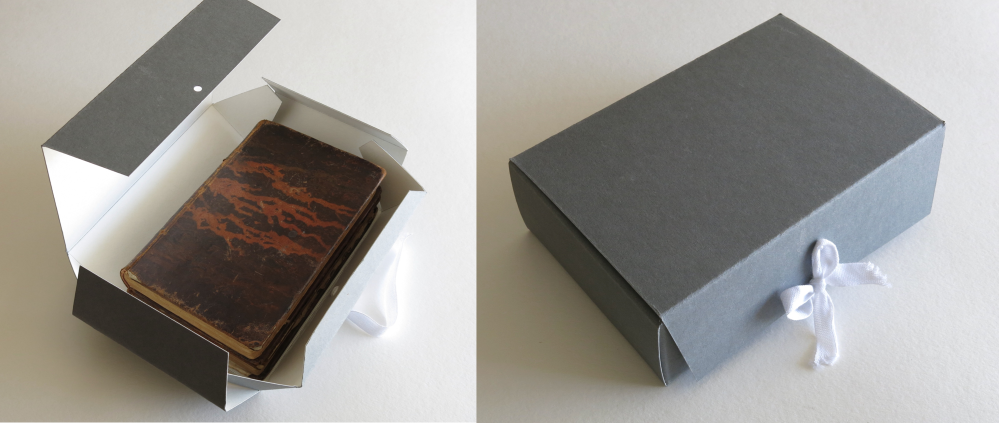
More than words: conservation of documents and cultural heritage
It’s unquestionable the importance of conserving books and other types of documents. They are a narrated testimony of our human lives and can give us specific information to better understand our past existence. And the research developed by RESEED project is proof of that!
Digital libraries and archives have been a demand in the past few years, increasing their relevance during the pandemic. The digital conversion of documents promotes the faster dissemination of historical resources. This process also helps to preserve their condition for longer. Handling objects is one of the most damaging things and should be avoided if we want to keep them to future generations.
When rare books are available for consultation to the public in archives, libraries and museums, the visitors are usually asked to only carry paper and pencil, be extremely careful with the document and sometimes wear gloves.Bringing a pencil instead of any pen with permanent ink can prevent irreversible damages to the documents (graphite can be easily erased). What about the gloves? Have you ever wondered why in some institutions you don’t need to wear gloves?
Contrary to widespread belief, when handling rare and valuable books (that not have hazards for us) is actually better not to use gloves and only keep our hands clean and dry without any creams (this includes also sanitisers). The sensibility we have in our skin is essential to prevent injuries while flipping the pages and to control the pressure we make during that movement and other types of contact. With gloves, we are adding a layer on our hands that decreases our awareness of feeling the object and, therefore, increases the potential of physical damage. Nevertheless, the gloves are used firstly to protect us from the object being handled, and secondly the other way around. It’s important to always keep in mind the proprieties of each material before making that decision.
Example of cracks at the edges of a paper document.
Source: Carina Fonseca, 2021.
Having our hands “dirty” can be summarized in two main problems: the natural skin oils and salts that we are constantly producing (also known as sweat) and the dust particles we carry around. When those substances are in contact with paper documents, they can start a chemical reaction sometimes hard to predict. For example, the oil can mark the page resulting in stains sometimes not noticeable right away. However, in the medium-long term, mould can even start to develop and grow!
In the past, white gloves were always associated with handling artefacts in museums and archives. These white gloves are nothing more than cotton gloves and cotton consists of millions of fibers seen by the naked eye. Now, try to see yourself handling a paper document like the one shown above, full of mechanical damages at the edges, while wearing cotton gloves. Can you see the cotton fibers grabbing the brittle paper? During a small movement, it can increase the cracks if you’re not attentive, adding to the fact that these gloves are thicker than the nitrile ones (blues) commonly used. This is an extreme example but illustrates an important reason why cotton gloves are beginning to be less and less used with such fragile material.
Despite our hands being a potential hazard if not kept clean, there is another aspect to consider: our breath and everything that we exhale and lands on the surface of the object. Due to the pandemic, we need to use a mask wherever we go. However, months ago we could enter any cultural heritage building without even think about it.
There is a wide range of materials used for writing throughout the centuries, from the support and its production to the ink itself. One of the most common issues is the degradation of iron gall ink on organic supports. It is made essentially with iron sulfate, tannic acid, water and a binder (usually gum arabic). When in contact with light, high values of relative humidity and temperature, iron corrosion is accelerated. The ink gets lighter and brown and can even “eat” the support, resulting in a document with missing information.
Source: Carina Fonseca, 2021.
An apparently quiet profession
Who are these people who take care of cultural heritage objects? Here is when conservator-restorers come out of their hiding and show up. A way of simplifying their job is by making an analogy, calling them the doctors of objects, which means:
- They do a diagnostic with the right tools to check up the object’s integrity and potential diseases that may occur (preventive conservation);
- They use the best methods to prevent the development of the disease (conservation);
- If the disease is in a severe stage that puts at risk the integrity and understanding of the object itself, they treat it using three golden rules – reversible materials, minimum intervention and respect for the previous purpose of the object (restoration).
Surface cleaning of a paper document with a soft and natural bristled brush, a common conservation treatment.
Source: Carina Fonseca, 2021.
This procedure is carefully documented – written and photographed – and kept with the object to continue its history. That being said, conservator-restorers need to have an overall understanding of the object: What is its story and connection with other items in the collection? By who and how was it made? What materials were used? How it will deteriorate? What are the best conditions to prevent it? To accomplish that, conservator-restorers have a 5 years high education where they learn the history of art, the chemistry of the materials, the cultural heritage law, handling practices and how to use all types of instruments (including scientific ones) to get the information they are looking for in the object. In Portugal, FCT NOVA is one of the high education institutions that focuses on scientific research in the field.
The conservator has also an important role in finding answers for questions thrown by historians, archaeologists, biologists and any other field that needs specific data about an object’s materiality. Conservation-restoration is a transdisciplinary profession that needs a constant dialogue with history, science and arts.
Archival box of a book commonly used in archives and libraries. Usually, the material used is an acid-free card due to its neutral interaction with the object materials. These boxes can be purchased already made in specialized stores or be constructed from scratch by the conservator, depending on the size needed.
Source: Carina Fonseca, 2021.
In archives, libraries and museums, the conservator can also be the person that controls the 10 agents of deterioration doing routine observations in the storage and galleries to ensure that the collection is safe from external threats. In private practice, conservator-restorers tend to be more restorers due to the aim of clients to have an object in a pristine condition, the more it looks new the better: nevertheless, the work is always done without ever calling into question the ethic code of the profession.
Although this mindset is starting to shift, it’s important to highlight: each document is unique, just like you and me. There are more than words and what our eyes can see. It is fundamental to preserve it to understand better our past. Science is always evolving and expanding! Be always kind and respectful with the wonderful treasure that may come to your hands.





Good description of conservator-restorers 👍